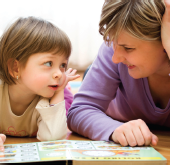A prospective birth cohort of 244 mothers and their three-year-old children from Ohio was conducted to estimate the impact of gestational and childhood bisphenol A (BPA) exposures on behavior and executive function at three years of age. BPA concentrations were measured in >97% of maternal (16 and 26 weeks of gestation and birth; median 2.0 μg/L) and child (1, 2, and 3 years of age; median 4.1 μg/L) urine samples. With adjustment for confounders, each 10-fold increase in gestational BPA concentrations was associated with more anxious and depressed behavior on the Behavior Assessment System for Children 2 (BASC-2) and poorer emotional control and inhibition on the Behavior Rating Inventory of Executive Function-Preschool (BRIEF-P). The magnitude of the gestational BPA associations differed according to child gender; BASC-2 and BRIEF-P scores increased 9 to 12 points among girls but changes were null or negative among boys. Associations between childhood BPA exposure and neurobehavior were largely null and not modified by child gender. The authors concluded that gestational BPA exposure affected behavioral and emotional regulation domains, especially among girls and that clinicians may want to advise concerned patients to reduce their exposure to certain consumer products. Pediatrics. 2011 Nov;128(5):873-82. PMID: 22025598
Home Research News Early-life bisphenol A exposure negatively affects behavior and emotional regulation in children.









